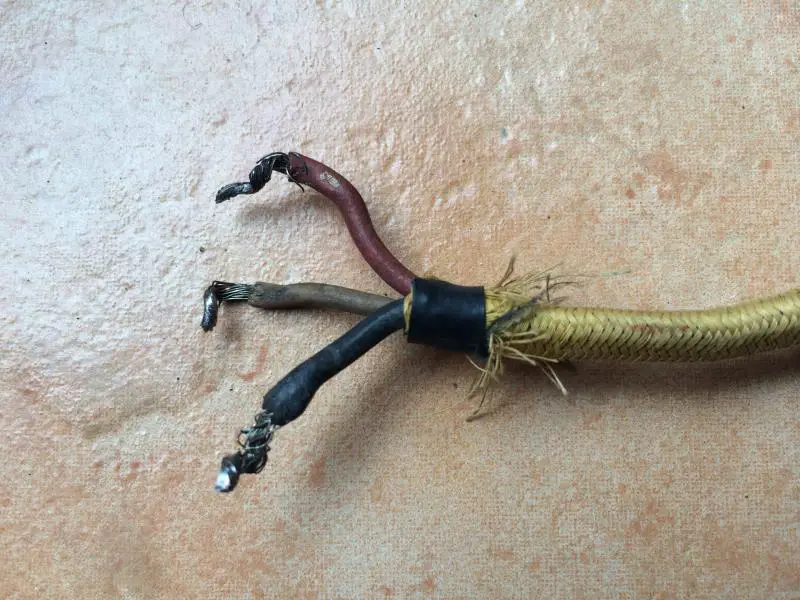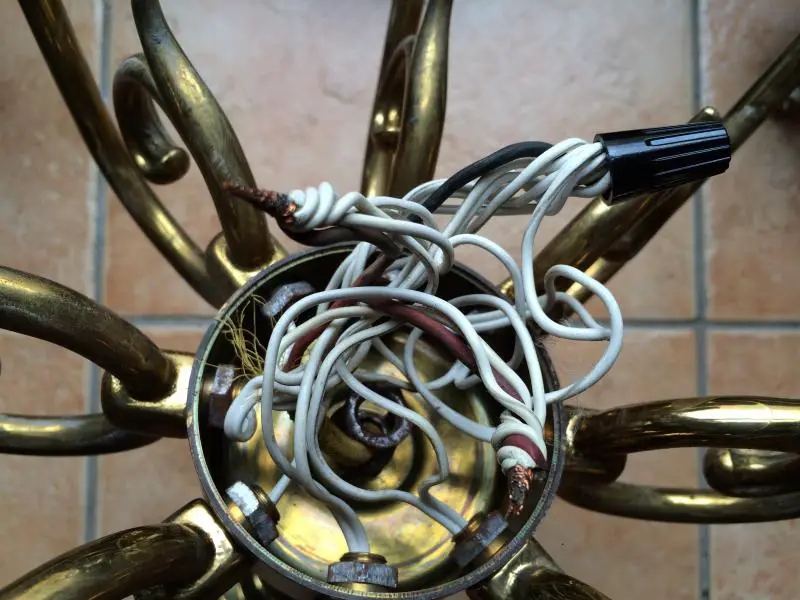Hi All,
I was wondering if you can help me identify the conductors in the flex of an old Dutch style chandelier I recently bought at a restoration yard. There's a red, black and brown wire. These wires are in turn connected to the individual socket wires in the body of the chandelier. It is an eight arm chandelier. 8 of the socket wires are connected to the black wire and 4 each are connected to the brown and red wires.
My question is, which wire is live and which is neutral. And is there an earth wire here?
Thanks in advance.

I was wondering if you can help me identify the conductors in the flex of an old Dutch style chandelier I recently bought at a restoration yard. There's a red, black and brown wire. These wires are in turn connected to the individual socket wires in the body of the chandelier. It is an eight arm chandelier. 8 of the socket wires are connected to the black wire and 4 each are connected to the brown and red wires.
My question is, which wire is live and which is neutral. And is there an earth wire here?
Thanks in advance.



